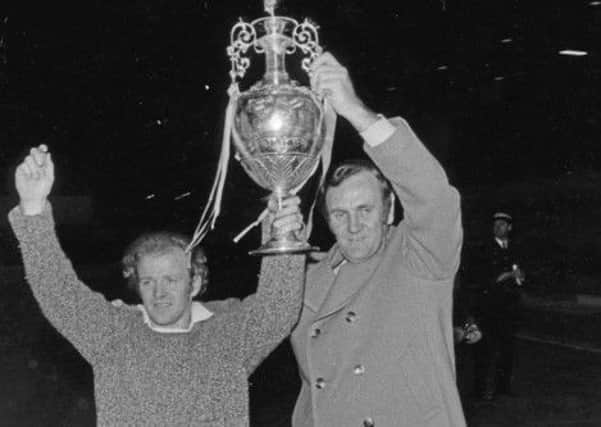Football clubs put tradition back in fashion with replica shirts


Sheffield University’s Dr Chris Stride has carried out a statistical analysis of football teams’ kits dating back to 1888.
It reveals that clubs releasing new kits has become more frequent but designs have become increasingly governed by tradition over the last two decades.
Advertisement
Hide AdAdvertisement
Hide AdDr Stride says this is because of the adult market for replica football shirts as leisurewear which developed significantly from the late 1980s and early 1990s.
In the early 1970s kit manufacturers such as Admiral and Umbro forged contracts with clubs and introduced copyrighted designs, allowing them to market their shirts. As a result, designs became more detailed and intricate, making them unique to their specific club and promoting the manufacturer’s brand, with regular changes boosting income.
Between 1975 and 1980, use of different coloured trim on shirts increased by 40 per cent. In the last 25 years, the percentage of clubs changing their home kit at the start of any season has doubled to almost 100 per cent. However Dr Stride said that flashy or intricate shirts - such as the tiger print shirt used by Hull City in 1990s have now become less common.
He said football shirts were now part of a marketing strategy which used a club’s history and identity to appeal to fans. He added: “I think so much is changing in football now with old grounds going that fans like to be able to hold on to a sense of tradition. In the past teams would change the colours they wore but you don’t see that happening now . And when they do there is an outcry.”
Advertisement
Hide AdAdvertisement
Hide Ad“Football shirts used to be produced as far back as the 1950s but they were only aimed at children. “Kit designs were also not copyrighted so you could buy a shirt which was both Derby County and Spurs.
It was Don Revie’s Leeds United and Admiral in 1974 were the first club to have a shirt copyrighted.”
The study found the adult market for replica football shirts as leisurewear only developed significantly from the late 1980s and early 1990s. Today sales to adults provide the bulk of a billion dollar industry, Manchester United alone selling approximately two million shirts per year.
Dr Stride said: “Several factors were behind this shift from child to adult sales, including fashion trends towards sportswear within supporter subcultures, and also in wider society linked to the leisure boom of the 1980s. Other factors include the wider social phenomenon of ‘kidulthood’ in which previous generational boundaries of clothing and behaviour disappeared; the existence of a generation of fans who had grown up wearing child replica shirts; and then the commercialisation of football as the Premier League era began.”